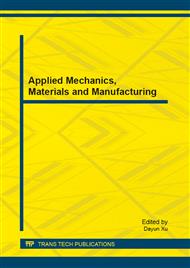p.602
p.609
p.613
p.617
p.624
p.632
p.639
p.644
p.649
8-Node Multi-Resolution Solid Element Formulation
Abstract:
An 8-node multi-resolution solid element is proposed in this paper. The new multi-resolution analysis (MRA) framework is formulated out of a mutually nesting displacement subspace sequence, whose basis functions are constructed of scaling and shifting on space domain of a basic isoparametric node extended shape function. The basic node extended shape functions are constructed from shifting to other seven quadrants around a specific node of a basic element in one quadrant and joining the corresponding node shape functions of eight elements at the specific node. The MRA endows the proposed element with the resolution level to adjust structural analysis accuracy. The node extended shape functions make all the node-related sub-elements connect together at the nodes as a whole as the initial proposed element in resolution level adjusting. As a result, the resolution level adjusting for the proposed element method is more rationally, easily and efficiently to be implemented than the meshing or re-meshing for the conventional mono-resolution solid element method. The multi-resolution solid element is more adapted to dealing with the accurate computation of structural problems.
Info:
Periodical:
Pages:
624-631
Citation:
Online since:
August 2013
Authors:
Price:
Сopyright:
© 2013 Trans Tech Publications Ltd. All Rights Reserved
Share:
Citation:


